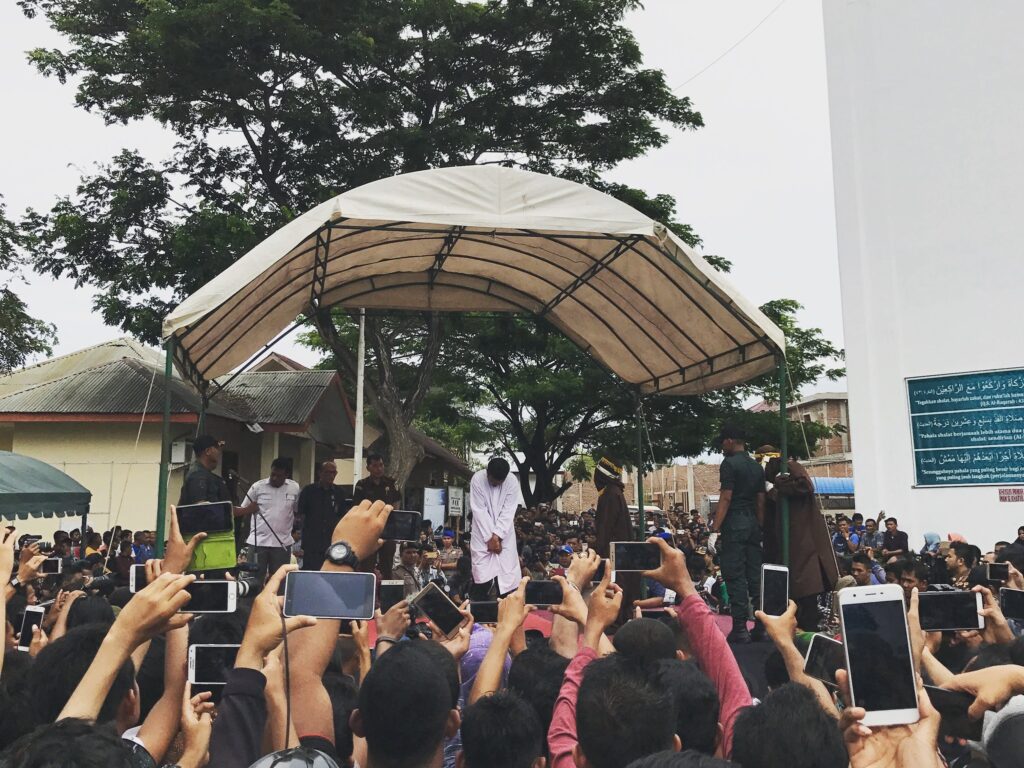The Aceh Project

Introduction
The promulgation of Aceh Qanun Number 6 of 2014 on Jinayat Law, or commonly known as Aceh Qanun Jinayat, marks a significant development of Islam’s long history in the region. After decades of contention rife with conflicts and bloodshed between the Acehnese local political power with the Indonesian central government, this is the first time that Islamic criminal law is formally codified complete with its accompanying procedural law (Aceh Qanun Number 7 of 2013).
The repercussions of this law are manifolds. The law introduces numerous new Islam inspired criminal offenses and forms of punishments previously unrecognized under Indonesia national criminal justice system such as public lashing. It transforms the religious courts (Pengadilan Agama) in the region previously mandated only to handle personal matters of Muslims in cases such as divorce and inheritance, to courts that also adjudicate Islamic criminal cases (Mahkamah Syar’iyah). Ultimately, Aceh Qanun Jinayat emerges as the latest Islamic law development in the modern era that straddles between classical Islamic criminal law that it claims to implement and the Indonesian criminal justice system that precedes it.
Given the exhaustive and sweeping changes that the law introduces, analyzing Aceh Qanun Jinayat as a whole is challenging. With more than thirty new types of criminal offenses and specific evidentiary rules that come with it, few are able to get neither the larger picture of its implementation nor a more in-depth analysis of the law. This is mainly due to the difficulty of accessing court records, which remain challenging to collect and analyze despite their availability online. The result is a fragmented body of knowledge on the law whereby Aceh Qanun Jinayat is occasionally brought up when a high-profile public lashing is carried out.
The Aceh Project aims at filling in this knowledge gap by collecting court records and media reports to produce statistical data and get a wider picture of how the system works and how it has affected the people it prosecutes. It also produces short in-depth blog posts looking at more specific and often overlooked cases based on the court documents to shed light on some of the less popular aspects of Aceh Qanun Jinayat that seem to be out of the public eye.
Criminal Offenses and Punishments
Criminal offenses promulgated in the Aceh Qanun Jinayat are divided into ten categories. Each category is further specified into several offenses totalling at 35 different crimes. Definitions provided in the list below are a direct translation of the definitions written in the general provisions of Aceh Qanun Jinayat (Aceh Qanun Jinayat 2014 Article 1 point 1- 40). Important to note that in the implementation of Aceh Qanun Jinayat, the courts strictly use the definition written on the codified law which might differ from classical Islamic law. Hence, one must be cautious as not to assume that these Arabic sounding words mean the same as understood by Arabic speakers or what has been commonly defined in classical Islamic law.
Oceanic Inspiration
Criminal offenses promulgated in the Aceh Qanun Jinayat are divided into ten categories. Each category is further specified into several offenses totalling at 35 different crimes. Definitions provided in the list below are a direct translation of the definitions written in the general provisions of Aceh Qanun Jinayat (Aceh Qanun Jinayat 2014 Article 1 point 1- 40). Important to note that in the implementation of Aceh Qanun Jinayat, the courts strictly use the definition written on the codified law which might differ from classical Islamic law. Hence, one must be cautious as not to assume that these Arabic sounding words mean the same as understood by Arabic speakers or what has been commonly defined in classical Islamic law.
Criminal Offenses List
| Khamar | Khamar (alcoholic beverages) is defined as intoxicating liquor containing 2% or more alcohol. |
Leave a Reply